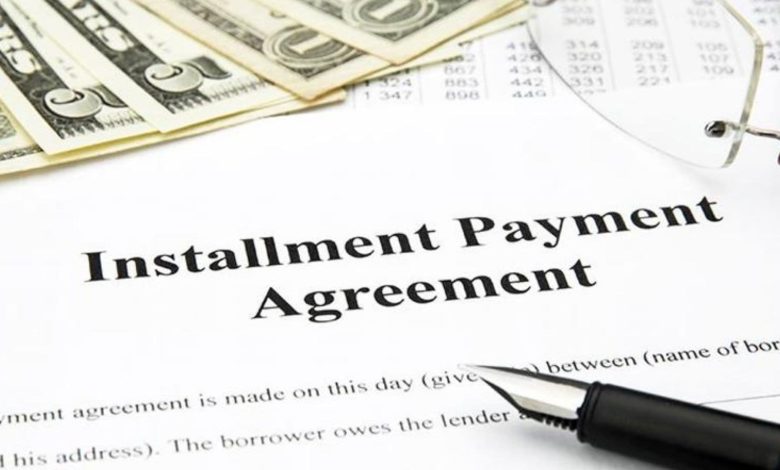
Owing money to the IRS can feel overwhelming, but knowing how to set up a payment plan with IRS can make the process a whole lot easier. If you’re wondering how to break down your tax bill into more manageable payments, you’re in the right place. Setting up a payment plan with the IRS is a practical solution that allows taxpayers to pay off their tax debt over time, and it’s easier than you might think. Whether you owe back taxes from a previous year or can’t afford to pay your full tax bill for the current year, understanding how to set up a payment plan with the IRS will help you stay on track and avoid additional penalties. This article walks you through the steps, options available, and important things to keep in mind when arranging a payment plan with the IRS.
What Is a Payment Plan with the IRS?
A payment plan with the IRS is an arrangement where taxpayers who owe taxes can pay their debt in smaller, more affordable installments over time. The IRS offers two main types of payment plans: the Installment Agreement and the Offer in Compromise. The Installment Agreement is the most common, where you agree to pay the IRS a fixed amount each month until the debt is cleared. Setting up this plan can help you avoid severe consequences such as liens, wage garnishments, or bank levies, and it provides a clear roadmap to pay off your taxes in full.

Steps to Set Up an IRS Payment Plan
Setting up a payment plan with the IRS doesn’t have to be complicated. Here are the steps you need to follow:
- Determine Eligibility: To qualify for a payment plan, your total tax debt must be less than $50,000, and you must have filed all your tax returns. If your debt exceeds $50,000, you may need to explore other options, such as a partial payment agreement or an Offer in Compromise.
- Choose the Right Payment Plan: There are different types of payment plans to consider:
- Short-Term Payment Plan: If you can pay off your balance within 120 days, a short-term payment plan may be the best option. There is no setup fee for this plan, and you can pay online, by phone, or through a mobile app.
- Long-Term Payment Plan (Installment Agreement): This option spreads your tax payments over a longer period (typically more than 120 days). There are setup fees, and the IRS will need to approve your monthly payment amount based on your financial situation.
- Apply Online or by Mail: You can apply for a payment plan online through the IRS Online Payment Agreement tool or by mailing Form 9465. Applying online is the fastest and easiest method, but if you prefer, you can mail in your form.
- Agree to the Terms: Once the IRS reviews your request, they’ll send you an approval notice outlining the monthly payment amount and due date. Make sure to carefully review these terms before agreeing. Be prepared for interest and penalties to continue accumulating until the debt is paid off.
- Set Up Automatic Payments (Optional): If you want to avoid missing any payments, setting up automatic monthly deductions from your bank account is a convenient option. This can also save you from incurring penalties for late payments.
How Long Does It Take to Set Up a Payment Plan?
The process of setting up a payment plan with the IRS can vary depending on the method you choose. If you apply online using the IRS Online Payment Agreement tool, the setup process can be completed in as little as 10 to 15 minutes. If you’re mailing in Form 9465 or need to submit additional documentation, it may take up to 30 days for the IRS to review and approve your request.
Things to Keep in Mind When Setting Up a Payment Plan with the IRS
- Interest and Penalties: Although you’re on a payment plan, the IRS will continue charging interest and penalties until your balance is paid in full. However, if you make all payments on time, you’ll avoid further penalties and collection actions.
- Failure to Comply: Missing a payment or failing to adhere to the agreed terms could result in penalties, additional interest, and the possibility of the IRS revoking your payment plan.
- Review Your Financial Situation: Before committing to a payment plan, make sure the monthly payment is manageable within your budget. The IRS may ask for detailed financial information to determine what you can afford.
- Communication is Key: If your financial situation changes or if you’re struggling to make payments, don’t hesitate to contact the IRS. They may offer alternatives, such as adjusting your monthly payment amount or extending the payment term.

Can You Set Up a Payment Plan if You Have Unfiled Returns?
In order to set up a payment plan, you must have filed all your tax returns. If you haven’t filed your returns yet, the IRS will require that you submit them before you can request a payment plan. Once your returns are filed, you can then move forward with setting up a payment plan for the amount due.
What Happens If I Can’t Afford a Payment Plan?
If you can’t afford the IRS payment plan, you may be eligible for alternative options, such as an Offer in Compromise. An Offer in Compromise allows taxpayers to settle their tax debt for less than the full amount owed, but it’s only available if you can demonstrate financial hardship. To determine eligibility, the IRS evaluates your financial situation, including income, assets, and expenses.
Conclusion: Stay on Top of Your IRS Payment Plan
Setting up a payment plan with the IRS is an effective way to manage your tax debt without the pressure of paying in one lump sum. By understanding your payment options and following the proper steps, you can take control of your finances and avoid future complications. Be sure to review your plan regularly, stay in touch with the IRS if necessary, and make your payments on time to ensure you fulfill your tax obligations successfully.
FAQs
Q: Can I set up a payment plan with the IRS online?
A: Yes, you can set up a payment plan with the IRS using the IRS Online Payment Agreement tool for quick and easy processing.
Q: What happens if I miss a payment on my IRS payment plan?
A: Missing a payment may lead to penalties, additional interest, and the risk of the IRS revoking your payment plan.
Q: Can I adjust my IRS payment plan if I can’t afford the current monthly payments?
A: Yes, if your financial situation changes, you can contact the IRS to discuss modifying your payment terms or adjusting the monthly payment amount.